Monitor is an irregularly published overview of publications from the previous six months that may be of relevance to comics studies scholars. The introductory texts are the respective publishers’. Do you have suggestions or information on new releases that have been overlooked and should be introduced on our website? Please let us know via email: redaktion@comicgesellschaft.de.
→ See previous Monitor posts.
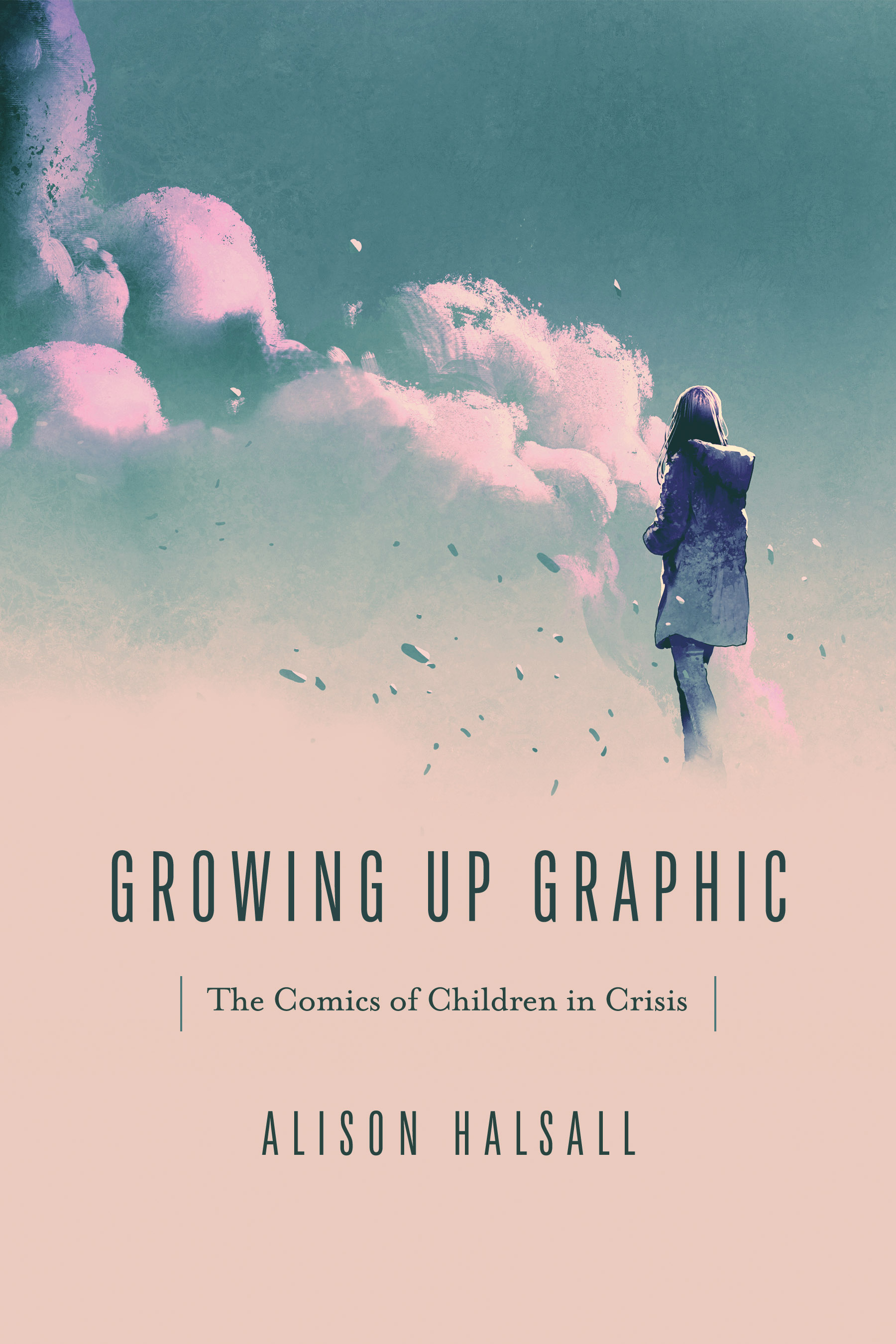 Growing Up Graphic: The Comics of Children in Crisis
Growing Up Graphic: The Comics of Children in Crisis
Alison Halsall
The Ohio State University Press
September 2023
Publisher’s website
“In Growing Up Graphic, Alison Halsall considers graphic texts for young readers to interrogate how they help children develop new ideas about social justice and become potential agents of change. With a focus on comics that depict difficult experiences affecting young people, Halsall explores the complexities of queer graphic memoirs, narratives of belonging, depictions of illness and disability, and explorations of Indigenous experiences. She discusses, among others, Child Soldier by Jessica Dee Humphreys and Michel Chikwanine, War Brothers by Sharon E. McKay, Baddawi by Leila Abdelrazaq, Matt Huynh’s interactive adaptation of Nam Le’s The Boat, and David Alexander Robertson’s 7 Generations. These examples contest images of childhood victimization, passivity, and helplessness, instead presenting young people as social actors who attempt to make sense of the challenges that affect them. In considering comics for children and about children, Growing Up Graphic centers a previously underexplored vein of graphic narratives and argues that these texts offer important insights into the interests and capabilities of children as readers.”
 Super-Girls of the Future: Girlhood and Agency in Contemporary Superhero Comics
Super-Girls of the Future: Girlhood and Agency in Contemporary Superhero Comics
Routledge Studies in Gender, Sexuality, and Comics
Charlotte J. Fabricius
Routledge
October 2023
Publisher’s website
“Super-Girls of the Future: Girlhood and Agency in Contemporary Superhero Comics investigates girl superheroes published by DC and Marvel Comics in the first two decades of the twenty-first century, asking who the new-and-improved super-girls are and what potentials they hold for imagining girls as agents of change, in the genre as well as its socio-cultural context.
As super-girls have grown increasingly numerous and diverse since the turn of the millennium, they provide an opportunity for reconsidering representations of gender and power in the superhero genre. This book offers the term agentic embodiment as an analytical tool for critiquing the body politics of superhero comics, particularly concerning youth, femininity, whiteness, and violence. Grounded in comics studies and informed by feminist cultural studies, the book contributes a critical and hopeful perspective on the diversification of a genre often written off as irredeemably conservative and patriarchal.”
 Ben Katchor
Ben Katchor
Benjamin Fraser
University Press of Mississippi
October 2023
Publisher’s website
“The recipient of a 2000 MacArthur fellowship, Ben Katchor (b. 1951) is a beloved comics artist with a career spanning four decades. Published in indie weeklies across the United States, his comics are known for evoking the sensorium of the modern metropolis. As part of the Biographix series edited by Frederick Luis Aldama, Ben Katchor offers scholars and fans a thorough overview of the artist’s career from 1988 to 2020.”
 The Political Imagination in Spanish Graphic Narrative
The Political Imagination in Spanish Graphic Narrative
Routledge Advances in Comics Studies
Xavier Dapena, Joanne Britland (eds.)
Routledge
November 2023
Publisher’s website
“In a spirit of community and collective action, this volume offers insights into the complexity of the political imagination and its cultural scope within Spanish graphic narrative through the lens of global political and social movements.
Developed during the critical years of the COVID-19 pandemic and global lockdown, the volume and its chapters reflect the interdisciplinary nature of the comic. They employ a cultural studies approach with different theoretical frameworks ranging from debates within comics studies, film and media theory, postcolonialism, feminism, economics, multimodality, aging, aesthetics, memory studies, food studies, and sound studies, among others.”
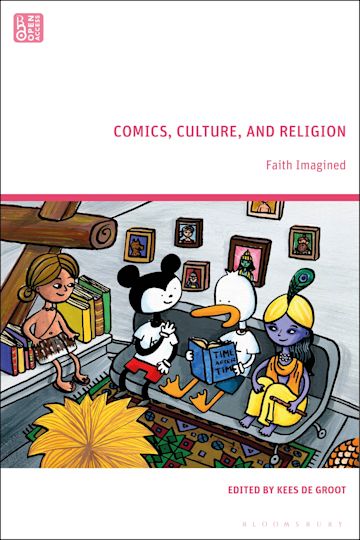 Comics, Culture, and Religion: Faith Imagined
Comics, Culture, and Religion: Faith Imagined
Kees de Groot (ed.)
Bloomsbury
November 2023
Publisher’s website
“This open access book offers an overview of the relations between comics and religion from the perspective of cultural sociology. How do comics function in religions and how does religion appear in comics? And how do graphic narratives inform us about contemporary society and the changing role of religion?
Contributing scholars use international examples to explore the diversity of religions, spirituality, and dispersed notions of the sacred, including Christianity, Islam, Judaism, Zoroastrianism, Indian, and Japanese religions. In addition, the rituals, ethics, and worldviews that surface in the comics milieu are discussed.”
 The Patterns of Comics: Visual Languages of Comics from Asia, Europe, and North America
The Patterns of Comics: Visual Languages of Comics from Asia, Europe, and North America
Neil Cohn
Bloomsbury
December 2023
Publisher’s website
“Comics are a global phenomenon, and yet it’s easy to distinguish the visual styles of comics from Asia, Europe, or the United States. But, do the structures of these visual narratives differ in more subtle ways? Might these comics actually be drawn in different visual languages that vary in their structures across cultures? To address these questions, The Patterns of Comics seeks evidence through a sustained analysis of an annotated corpus of over 36,000 panels from more than 350 comics from Asia, Europe, and the United States. This data-driven approach reveals the cross-cultural variation in symbology, layout, and storytelling between various visual languages, and shows how comics have changed across 80 years.“
 292 pages
292 pages Superevil: Villains in Silver Age Superhero Comics
Superevil: Villains in Silver Age Superhero Comics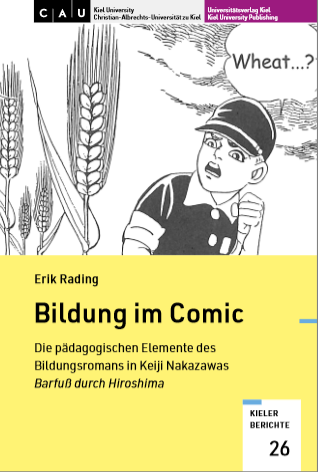
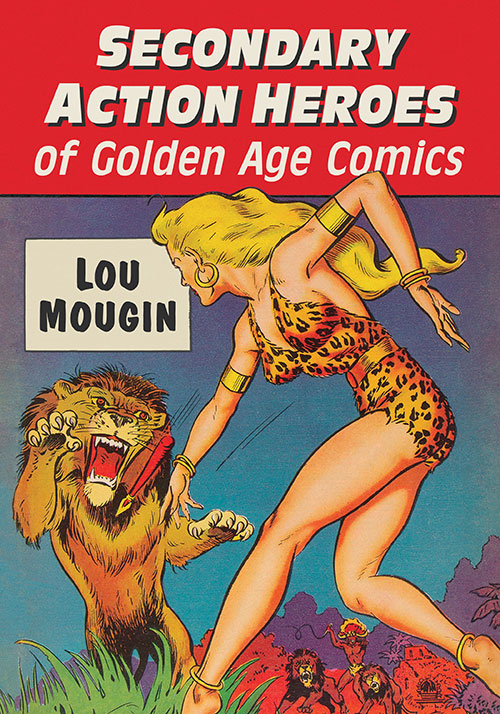
 Comics and Migration: Representation and Other Practices
Comics and Migration: Representation and Other Practices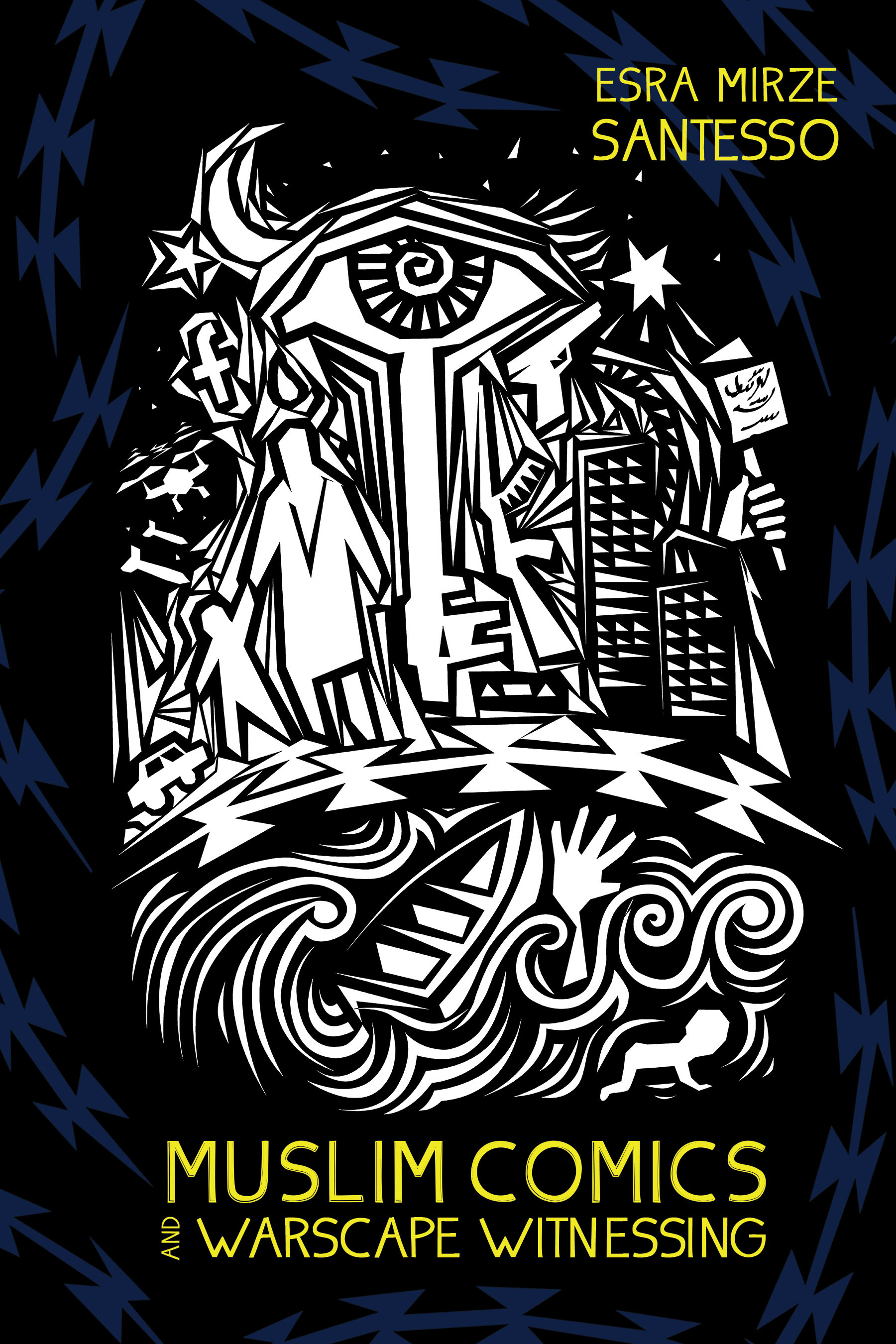 Muslim Comics and Warscape Witnessing
Muslim Comics and Warscape Witnessing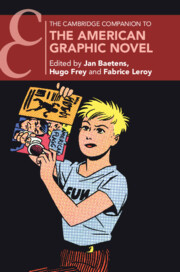 The Cambridge Companion to the American Graphic Novel
The Cambridge Companion to the American Graphic Novel

 Disability and the Superhero: Essays on Ableism and Representation in Comic Media
Disability and the Superhero: Essays on Ableism and Representation in Comic Media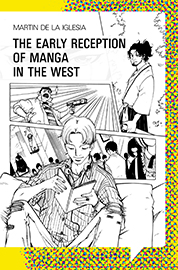 The Early Reception of Manga in the West
The Early Reception of Manga in the West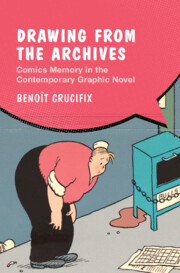 Drawing from the Archives: Comics Memory in the Contemporary Graphic Novel
Drawing from the Archives: Comics Memory in the Contemporary Graphic Novel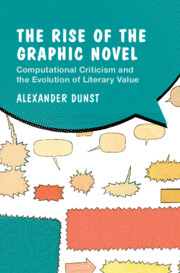 The Rise of the Graphic Novel: Computational Criticism and the Evolution of Literary Value
The Rise of the Graphic Novel: Computational Criticism and the Evolution of Literary Value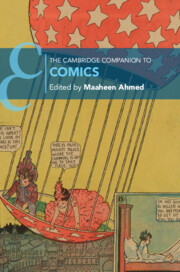 The Cambridge Companion to Comics
The Cambridge Companion to Comics ComFor-members
ComFor-members 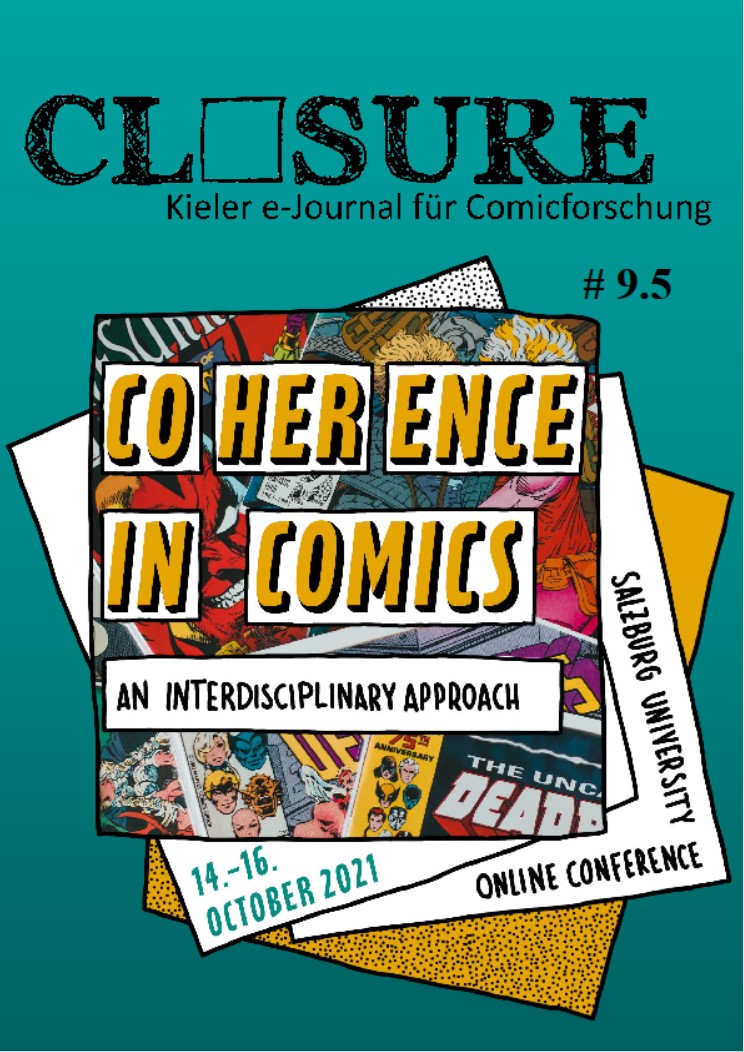 A special-themed issue #9.5 of
A special-themed issue #9.5 of 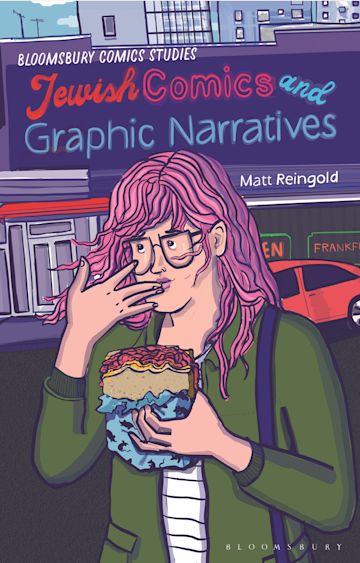 Jewish Comics and Graphic Narratives: A Critical Guide
Jewish Comics and Graphic Narratives: A Critical Guide Perfect Copies: Reproduction and the Contemporary Comic
Perfect Copies: Reproduction and the Contemporary Comic Asian Political Cartoons
Asian Political Cartoons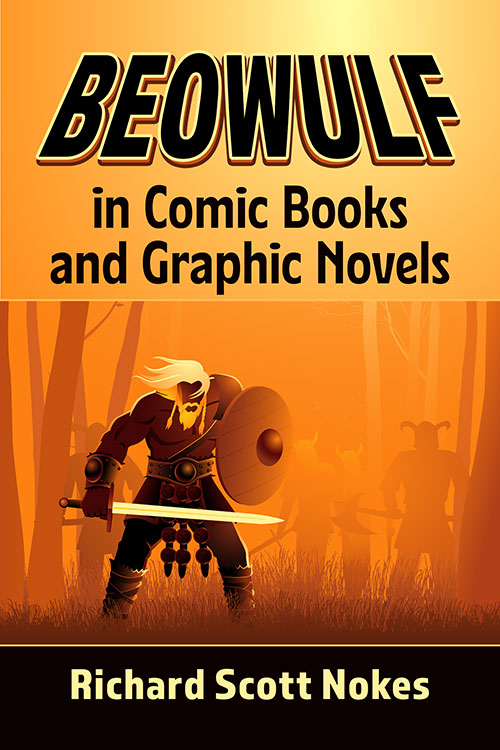 Beowulf in Comic Books and Graphic Novels
Beowulf in Comic Books and Graphic Novels